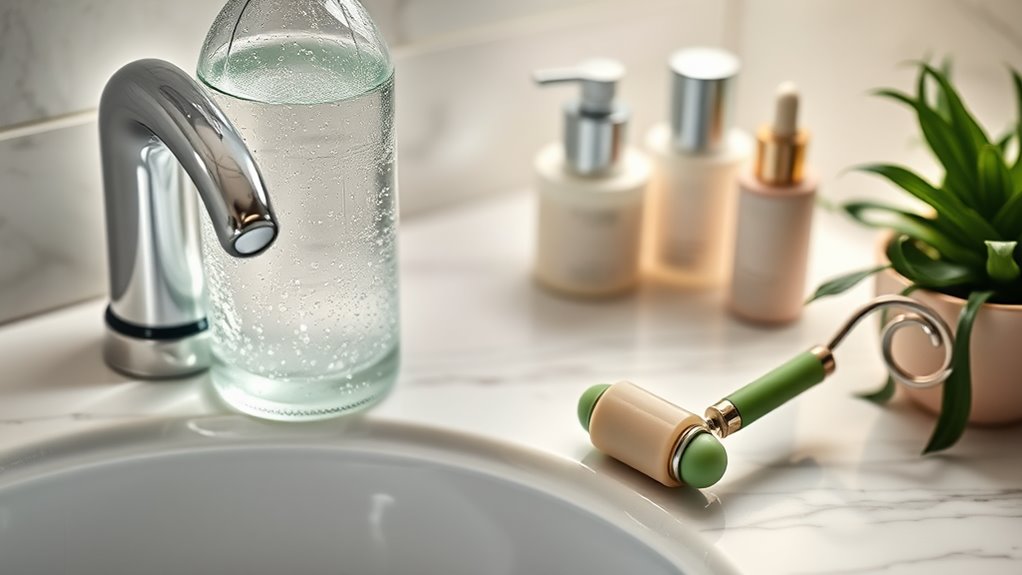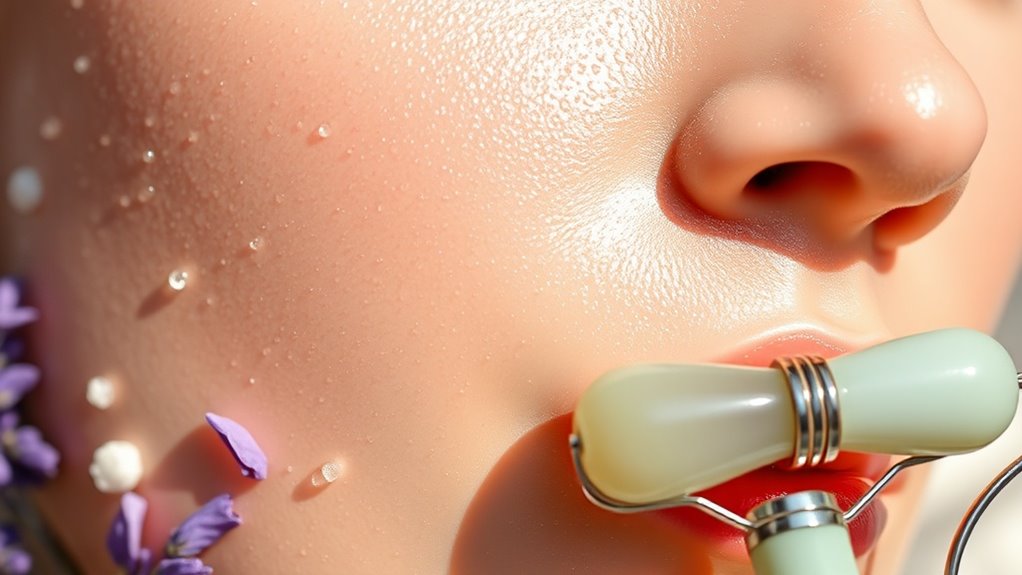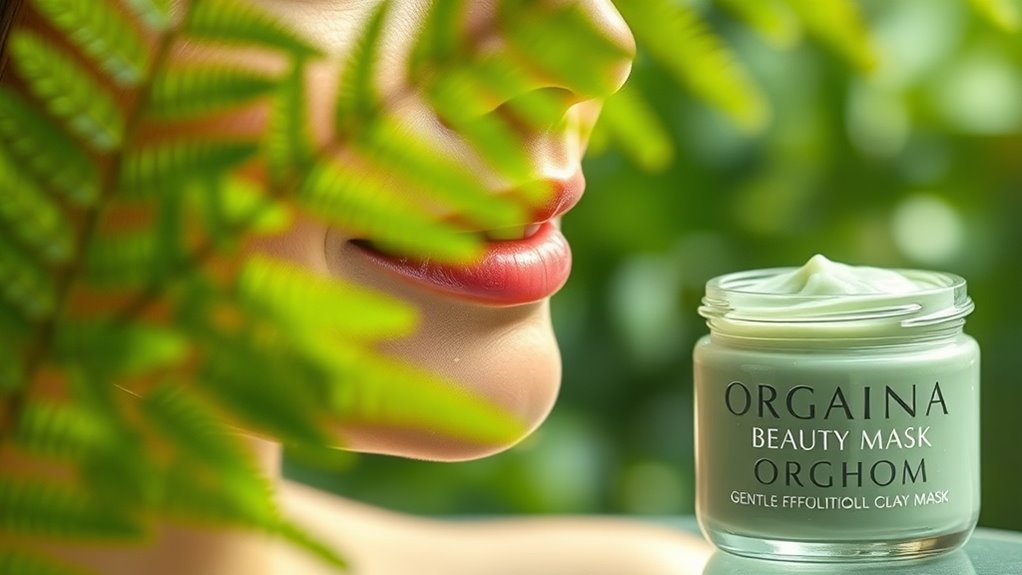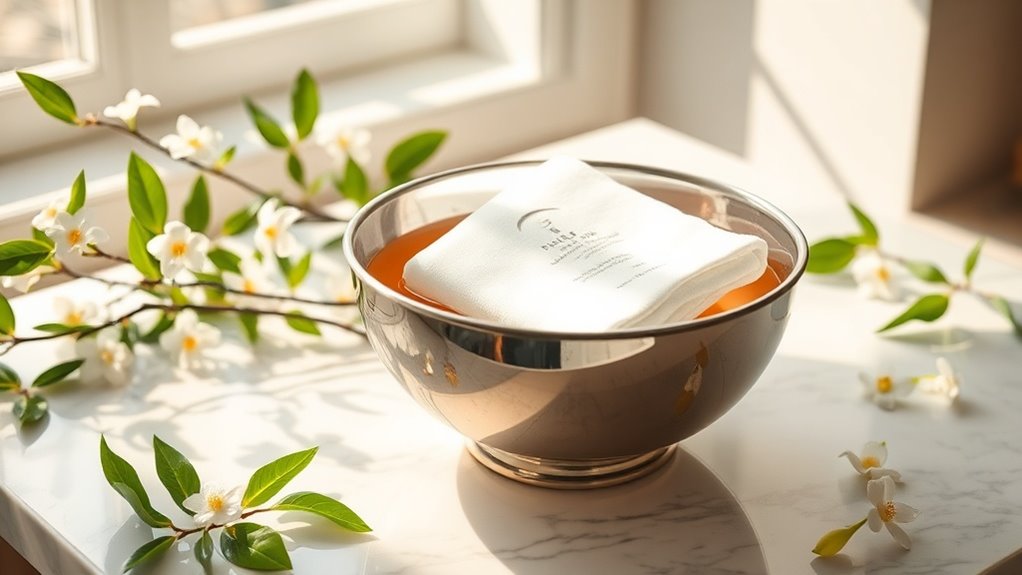Don’t Skip This Step in Your Skincare – It’s a Game Changer
If you want radiant skin, you can’t overlook exfoliation—it’s essential. This step removes dead skin cells and helps your products work more effectively. Ignoring it can leave your complexion dull and hinder collagen production. Finding the right exfoliation method for your skin type is crucial for achieving a vibrant glow. Understanding the different types and how often to use them can make all the difference. So, what’s the best approach for your skin?
The Science Behind Exfoliation
When you want to achieve glowing skin, understanding the science behind exfoliation is crucial. Exfoliating not only removes dead skin cells but also enhances cell turnover, which is vital for maintaining skin’s health.
By sloughing off those dull layers, you’re revealing fresh, radiant skin underneath. This process improves skin tone and texture, allowing your serums and moisturizers to penetrate more effectively.
The exfoliating importance lies in its ability to stimulate collagen production, minimizing the appearance of fine lines and promoting elasticity. Furthermore, the lack of exfoliation can lead to rough and uneven skin texture, making it even more important to incorporate this step into your routine.
Regular exfoliation can also prevent clogged pores, reducing the risk of breakouts.
So, integrating exfoliation into your routine isn’t just beneficial—it’s essential for achieving that coveted glow and a clearer complexion.
Prioritize it for best results!
Types of Exfoliants: Physical vs. Chemical
When it comes to exfoliation, you’ll find two main types: physical and chemical. Physical exfoliants use grit or granules to manually slough off dead skin, while chemical exfoliants rely on acids or enzymes to dissolve impurities and promote cell turnover. Understanding the differences between these methods can help you choose the right one for your skin type and concerns. However, it’s crucial to avoid over-exfoliating, as it can lead to barrier damage, causing irritation and compromising your skin’s health.
Physical Exfoliants Overview
Physical exfoliants play a vital role in transforming your skincare routine by providing immediate results through mechanical exfoliation.
These products, often containing fine particles like sugar, salt, or microbeads, slough away dead skin cells, revealing a brighter, smoother complexion. By incorporating physical exfoliation into your regimen, you can enhance your skin’s texture, boost circulation, and improve product absorption.
Try using them once or twice a week, depending on your skin type, to prevent irritation. Always remember to follow up with a moisturizer to maintain hydration.
If you want quick results and a refreshed appearance, physical exfoliants are your go-to solution. Embrace this step, and watch your skin transform into a radiant canvas. You won’t regret it!
Chemical Exfoliants Explained
While physical exfoliants work wonders for instant results, chemical exfoliants offer a deeper, more transformative approach to skin renewal. These products use acids or enzymes to gently dissolve dead skin cells, promoting cell turnover without the harsh scrubbing. You might find options like AHAs, BHAs, and enzymes suited to your skin type.
| Type | Key Benefits | Best For |
|---|---|---|
| AHAs | Brightening, anti-aging | Dry, sun-damaged skin |
| BHAs | Deep pore cleansing, acne-fighting | Oily, acne-prone skin |
| Enzymes | Gentle exfoliation, hydration | Sensitive skin |
Incorporating chemical exfoliants into your routine can unlock smoother, clearer skin while enhancing your overall glow. Don’t miss out on this game-changing step!
Benefits of Regular Exfoliation
Regular exfoliation is key to removing dead skin cells that dull your complexion and can lead to breakouts. By incorporating this step into your skincare routine, you’ll enhance the absorption of your products, maximizing their effectiveness. It’s essential to be mindful, however, as over-exfoliating can lead to damage that may detract from your desired results. Plus, you’ll notice a healthier glow that boosts your confidence and radiance.
Removes Dead Skin Cells
Exfoliating your skin is essential for achieving a vibrant and youthful appearance, as it effectively removes dead skin cells that can dull your complexion.
When you gently slough off these lifeless cells, you unveil fresh, healthy skin beneath, resulting in a smoother texture and radiant glow.
Regular exfoliation can help reduce the appearance of fine lines, prevent clogged pores, and even minimize breakouts.
Plus, it allows your skincare products to work better by eliminating the barrier that dead skin can create.
Incorporating exfoliation into your routine two to three times a week will ultimately lead to brighter, healthier skin.
Don’t overlook this crucial step—make exfoliation a priority and watch your skin transform!
Enhances Product Absorption
After removing dead skin cells, you’re setting the stage for your skincare products to work much more effectively.
By exfoliating regularly, you create a smooth, clean canvas, allowing serums, moisturizers, and treatments to penetrate deeper into your skin.
With better absorption, you’ll maximize the benefits of active ingredients, such as vitamins and antioxidants. This means your skin receives the nourishment it craves, boosting hydration and promoting a more youthful appearance.
If your products seem to sit on top of your skin, it’s time to reconsider your exfoliation routine.
Just a few minutes of gentle exfoliation a week can dramatically enhance product absorption, making your skincare investment truly worthwhile.
Don’t let dead skin cells hold you back; start reaping the rewards today!
Promotes Healthy Glow
When you commit to a consistent exfoliation routine, your skin begins to transform, revealing a vibrant, healthy glow that’s hard to ignore.
Regular exfoliation removes dead skin cells, allowing fresh, radiant skin to surface. This process not only enhances your complexion but also promotes better circulation, which feeds your skin nutrients and oxygen.
Moreover, it can help prevent dullness and uneven skin tone, making your skin appear brighter and more youthful.
The key is to find a balance—exfoliating too often can irritate your skin, while not enough can lead to buildup. Aim for 1-3 times a week, depending on your skin type.
Trust this simple step to breathe life back into your skin and boost your confidence.
How Often Should You Exfoliate?
How often do you really need to exfoliate for optimal skin health? The answer depends on your skin type and the products you’re using. Here’s a guideline to help you find the right frequency:
-
Oily Skin: Exfoliate 2-3 times a week to control excess oil and prevent breakouts.
-
Dry or Sensitive Skin: Go for 1 time a week to avoid irritation and maintain moisture levels.
-
Combination Skin: You might benefit from 1-2 times a week, focusing on problem areas.
-
Normal Skin: Exfoliate once a week to keep your complexion vibrant.
Finding the right balance is essential.
Over-exfoliating can lead to irritation, while under-exfoliating can cause dullness. It’s important to remember that the right frequency can significantly impact your skin’s health and appearance.
Adjust as needed for your unique skin condition!
Incorporating Exfoliation Into Your Routine
Incorporating exfoliation into your skincare routine can be a transformative step toward achieving a radiant complexion.
Start by choosing the right exfoliator for your skin type—physical exfoliants work well for oily skin, while chemical exfoliants suit sensitive or dry skin. Aim to exfoliate regularly, about 1-3 times a week, to slough off dead skin cells and promote cell turnover. This method is particularly effective for every skin type, allowing you to achieve smooth, radiant skin without irritation.
This process unclogs pores, enhances skin texture, and boosts product absorption, maximizing the benefits of your serums and moisturizers. Don’t forget to follow up with a hydrating moisturizer, as exfoliation can temporarily strip moisture.
Common Mistakes to Avoid When Exfoliating
Exfoliation offers amazing benefits, but it can backfire if you’re not careful. You may think you’re doing it right, but common mistakes can sabotage your skincare routine. Avoid these pitfalls:
-
Over-exfoliating: Exfoliating too frequently can irritate your skin, leading to redness and sensitivity.
-
Using the wrong products: Harsh scrubs or incompatible acids can damage your skin barrier.
-
Neglecting hydration: Always follow up with a good moisturizer to replenish your skin and lock in moisture.
-
Ignoring skin type: Tailor your exfoliation routine according to your skin type—what works for oily skin may not suit dry or sensitive skin.
Additionally, remember that over-exfoliating can cause long-term damage instead of achieving that sought-after smooth and radiant complexion.




